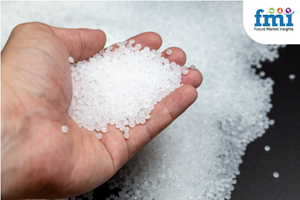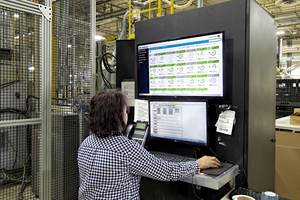Wood On Plastics: Auto Sector Exhibits Resilience
Despite tremendous obstacles, both the number of motor vehicles assembled in the U.S. and the total number of new cars sold in this country have still managed to register strong growth for the year to date.
After a strong start in the first quarter of this year, the market for new cars became tumultuous over the following three months. Thecombination of a spike in U.S. gasoline prices and the supply disruptions caused by the earthquake/tsunami/nuclear disaster in Japan constrained the auto market at the beginning of the second quarter. All the hoopla that accompanied the Federal government’s debt-limit debacle further suppressed consumers’ desire to spend as the summer progressed.
But through all of this, both the number of motor vehicles assembled in the U.S. and the total number of new cars sold in this country have still managed to register strong growth for the year to date.
According to monthly data compiled and reported by AutoData Corp., total light-vehicle sales in the U.S. (domestic and imported) are up nearly 11% through the first seven months of this year vs. the same period in 2010. And despite the high price of fuel, the growth rate is pretty even between passenger cars and light trucks (which includes SUVs and mini-vans). Combined sales for GM, Ford, and Chrysler are up 15% so far in 2011, while sales for both Honda and Toyota are actually down this year compared with 2010.
Probably more useful to processors that supply the U.S. auto industry is monthly data on U.S. motor-vehicle assemblies compiled and reported by the Federal Reserve Board. Through the first half of 2011, the number of motor vehicles assembled in America is up 10% from last year.
The outlook calls for growth in both new vehicle sales and assemblies through next year, but the rate will decelerate from the current 10% range down to 6-7%. This would result in annual sales growth of about 12.5% in 2011.
Our expectations for the second half of 2011 and 2012 are based on near-term improvement in both employment and housing. It will take several more quarters for these indicators to recover fully, but a discernable uptrend must soon emerge in both of them if this economy is going to generate any upward momentum. Next year is a major election year, and history has shown that election years tend to be distinguished by increased economic activity. We expect 2012 to follow that trend.
Longer-term, there are several trends and developments that bode well for the future of the auto industry. One of these is the high price of gasoline and another is that the average age of the U.S. auto fleet is at a historically high level. High gasoline prices are a short-term impediment to auto sales, but if they persist, then they motivate consumers to change their behaviors and purchase more efficient vehicles. Many consumers are currently postponing the purchase of a new car, but sooner or later this pent-up demand will be released. These trends suggest that the market for fuel-efficient vehicles will be sparked as soon as there is some improvement in the overall economy.
The second trend is the proposed rise in the CAFE (fuel emission) standards for new cars. Traditionally, the negotiations that precede the establishment of these standards elicit strong resistance from the auto industry, but the latest round was surprisingly amicable. And even more surprising was the fact that the mileage standards were nearly doubled from current levels. By the year 2025, the average mileage ratings for the all cars sold in the U.S. is expected to be more than 50 mpg. We are presently only in the mid-20s. This will require a fundamental shift in the way cars are built and the materials that are used. There will be a sharp rise in lightweight plastics, aluminum, and carbon fiber. This means there will also be huge change in the amount and types of machinery, molds, and tooling used to manufacture these vehicles.
WHAT THIS MEANS TO YOU
•Cars are becoming mobile computers. Their functions and the way they are manufactured increasingly represent cutting-edge technology.
•Disposal/recycling of cars once they are past their useful life will be an important factor in their design.
•Changes to infrastructure needs (i.e., battery recharging stations) will also provide opportunities for processors.
Related Content
Plastic Compounding Market to Outpace Metal & Alloy Market Growth
Study shows the plastic compounding process is being used to boost electrical properties and UV resistance while custom compounding is increasingly being used to achieve high-performance in plastic-based goods.
Read MoreNeste, Borealis and Covestro Plan to Make Polycarbonate From Recycled Tires
Companies announced agreement that will use advanced recycling to convert old tires into new PC-suitable for automotive applications.
Read MoreNew CRM Streamlines Quoting for Automotive Molder
Eliminating the need to contact each supplier for every individual quote, a new CRM for automotive supplier Axiom Group tracks past quotes as well as industry history to generate fast, reliable RFQs and more.
Read MorePEEK for Monolayer E-Motor Magnet Wire Insulation
Solvay’s KetaSpire KT-857 PEEK extrusion compound eliminates adhesion and sustainability constraints of conventional PEEK or enamel insulation processes.
Read MoreRead Next
For PLASTICS' CEO Seaholm, NPE to Shine Light on Sustainability Successes
With advocacy, communication and sustainability as three main pillars, Seaholm leads a trade association to NPE that ‘is more active today than we have ever been.’
Read MoreLead the Conversation, Change the Conversation
Coverage of single-use plastics can be both misleading and demoralizing. Here are 10 tips for changing the perception of the plastics industry at your company and in your community.
Read MoreMaking the Circular Economy a Reality
Driven by brand owner demands and new worldwide legislation, the entire supply chain is working toward the shift to circularity, with some evidence the circular economy has already begun.
Read More






















